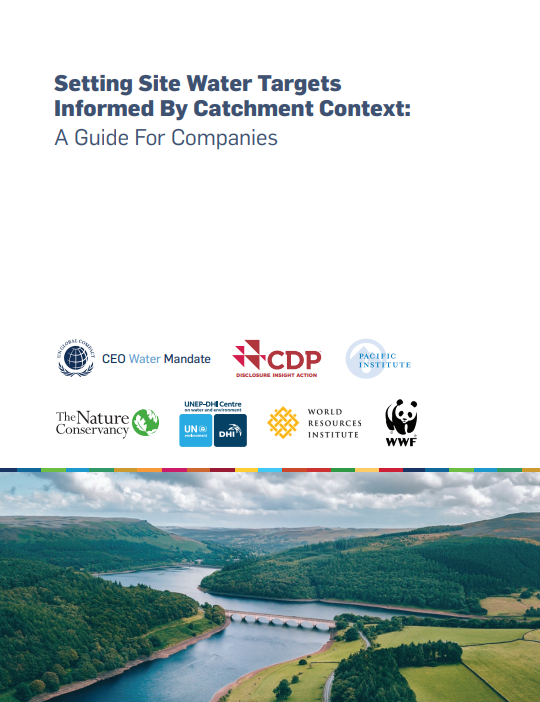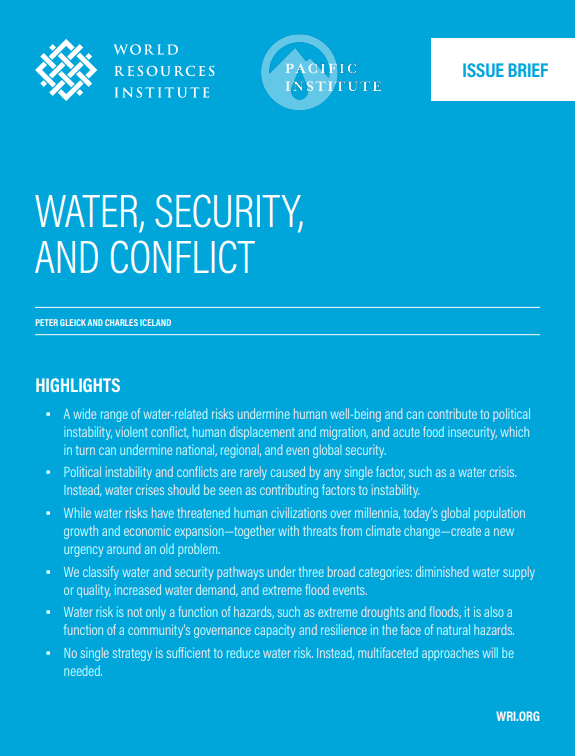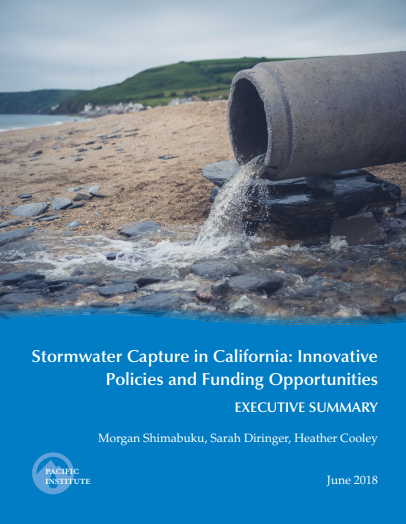1430 Resources

Corporate Water Stewardship
October 12, 2012 | post
Companies around the world increasingly recognize the risk that water scarcity, pollution, and weak water governance have to their core business. They are beginning to acknowledge the need to manage water as a key input to production and better address the ways in which their water use and wastewater discharge can affect nearby ecosystems and communities.
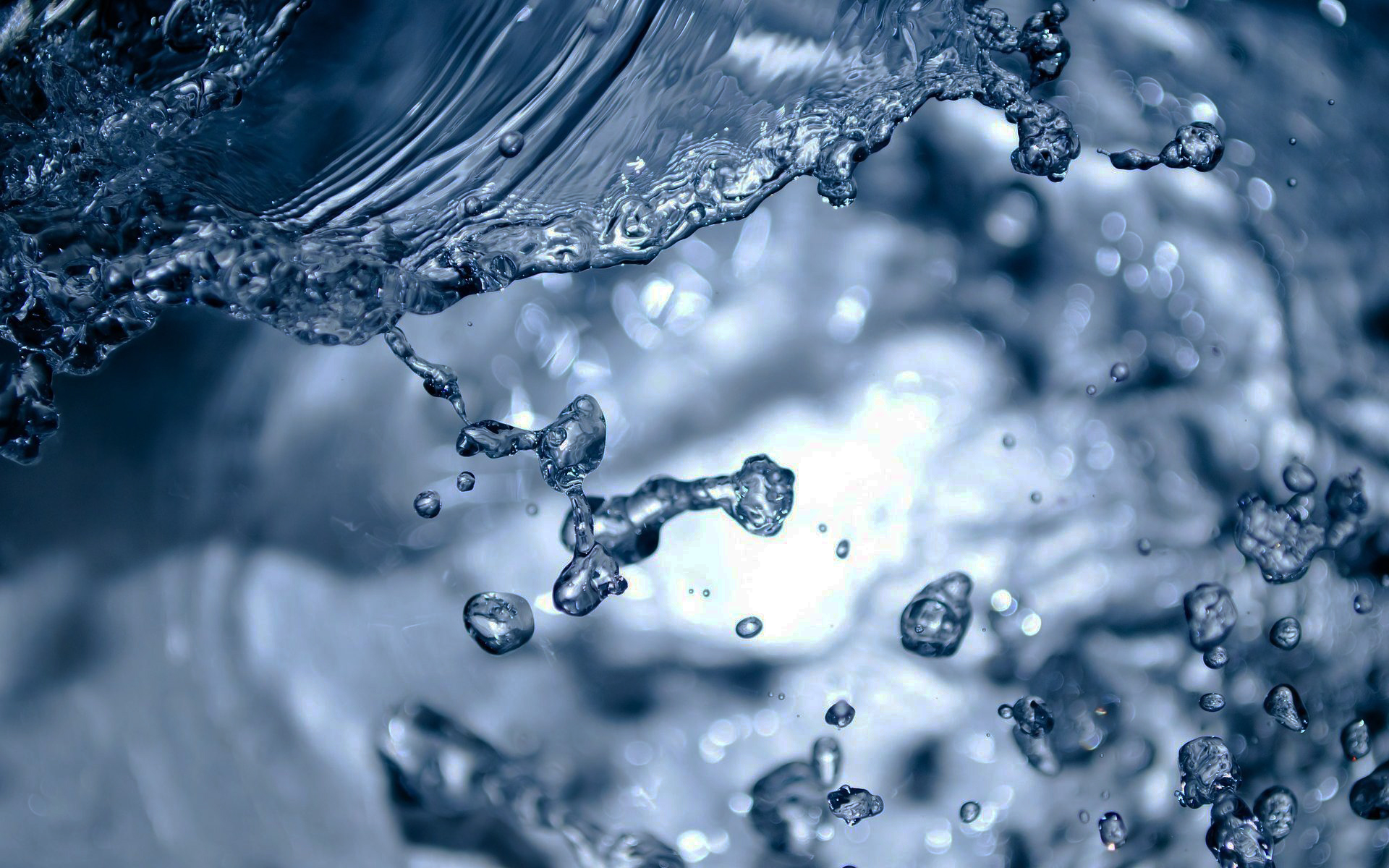
Water and Poverty
October 10, 2012 | post
It is everyone’s wish to be able to wake up each day and turn on a tap that provides a safe, constant source of drinking water, but this does not happen in the lives of nearly one billion people who live without access to potable water. With no option, they rely on polluted surface and groundwater sources which are also the main sources of water-related disease such as diarrhea, typhoid, cholera, and worm infection. Infectious, water-related illness can keep victims out of work for long periods of time, prevent school attendance, and even result in death: UNICEF reported that about 4,500 children die every day from preventable, water-related diseases.

Water-Energy Nexus
October 10, 2012 | post
Throughout the 20th century, the connections between water and energy were largely ignored. Water systems were designed and constructed with the assumption that energy would be cheap and abundant.

Environmental Health and Justice
October 9, 2012 | post
Who profits from our use of environmental resources? Who suffers the consequences of pollution and environmental degradation? Creating and sustaining healthy and thriving neighborhood environments is a challenge, particularly in low-income neighborhoods and communities of color, who carry disproportionate environmental burdens.

Empowering People and Communities
October 9, 2012 | post
Fundamental needs for environmental health, including safe water and sanitation, justice, and sustainability in poor and low-income communities around the world are not being met because of underinvestment, poor investment decisions, inappropriate technologies, ineffective systems of operation and maintenance, poor governance, and the failure to involve local residents in the decision-making process.

Notes from the Field: Mobile Phones Within Reach
September 26, 2012 | post
Due to their ubiquity in low- and lower-middle income countries, mobile phones are being used throughout the developing world to connect the poor with a range of information and services that can transform their lives...
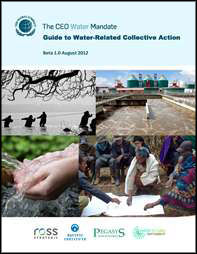
Guide to Water-Related Collective Action and Water Action Hub
August 29, 2012 | publication
Global water challenges must be addressed through collective action, where multiple stakeholders collaborate on shared water stewardship goals.
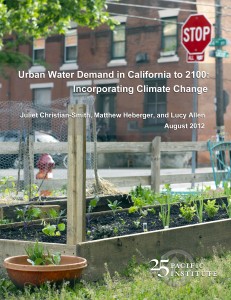
Urban Water Demand in California to 2100: Incorporating Climate Change
August 28, 2012 | publication
Climate change will have significant impacts on California water supply and demand. Research shows that the state’s changing climate will lead to increased water use in cities and suburbs, while water supply is expected to diminish.
Bringing a Human Rights Lens to Corporate Water Stewardship
August 26, 2012 | publication
Expectations that business will respect, and in some cases support or help fulfill, internationally recognized human rights have increased over the past decade.

Notes from the Field: Resident Says He Would Use Information from Community Choices for Water Tool to Be an Agent of Change
August 13, 2012 | post
Jean Zoundiis a 51-year-old man from Bissighin, a community located in the Commune of Saaba, which is about 25 km East of Ouagadougou in Burkina Faso.
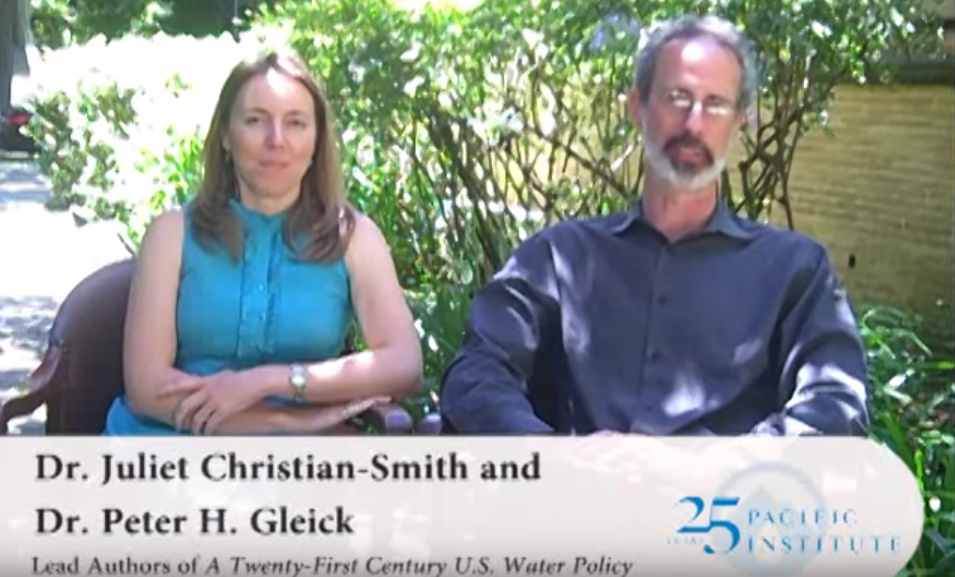
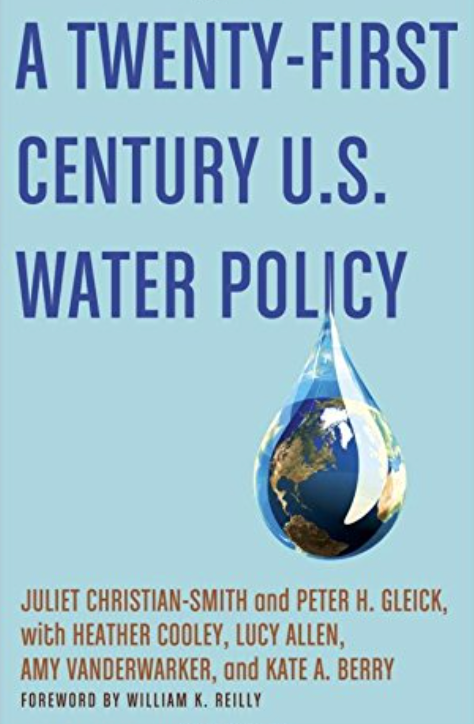
A Twenty-First Century U.S. Water Policy
July 31, 2012 | publication
This book provides the first independent assessment of water issues and water management in the United States in many decades, addressing emerging and persistent challenges from the perspectives of science, public policy, environmental justice, economics, and law.
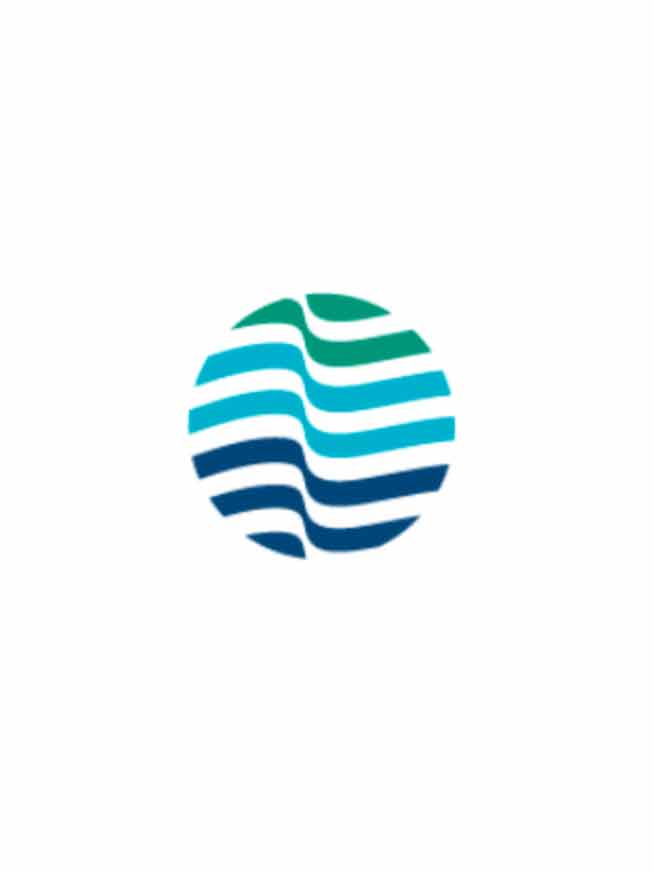
Cadiz Public Comments
July 24, 2012 | publication
This letter contains a summary of comments submitted by the Pacific Institute on the Draft Environmental Impact Report (DEIR) of the Cadiz Valley Water Conservation, Recovery, and Storage Project on March 13th, 2012.
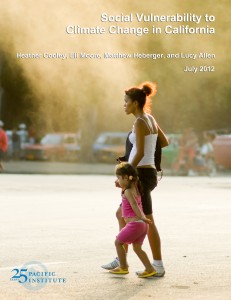
Social Vulnerability to Climate Change in California
July 21, 2012 | publication
California faces a range of impacts from global climate change, including increased incidences of extreme heat, wildfires, coastal flooding, and erosion.
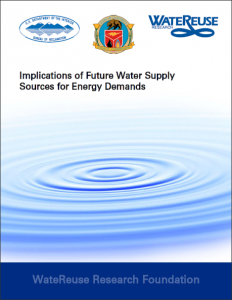
Implications of Future Water Supply Sources for Energy Demands
July 15, 2012 | publication
The Water–Energy Simulator (WESim) is an easy-to-use analytical tool that can be used to evaluate the energy and greenhouse gas implications of water management decisions.
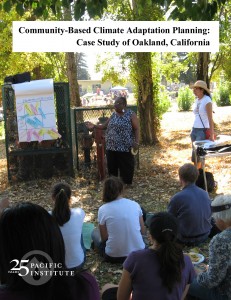
Community-Based Climate Adaptation Planning: Case Study of Oakland, California
July 15, 2012 | publication
This analysis identifies more than 50 strategies for building community resilience and adapting to climate-change impacts such as extreme heat, flooding, wildfires, poor air quality, and rising food, water, and electricity prices.

The Human Right to Water
July 13, 2012 | post
The human right to water is the fundamental right to life, health, and livelihood. The imperatives to meet basic human water needs are more than just moral, they are rooted in justice and law and the responsibilities of individuals and governments.

The Impacts of Sea Level Rise on the San Francisco Bay
July 2, 2012 | publication
Rising sea levels from global climate change pose a serious threat to the highly developed coastal communities of the San Francisco Bay. This report assesses the populations, critical infrastructure, and property at risk from projected sea-level rise, if no action is taken to protect the coast.
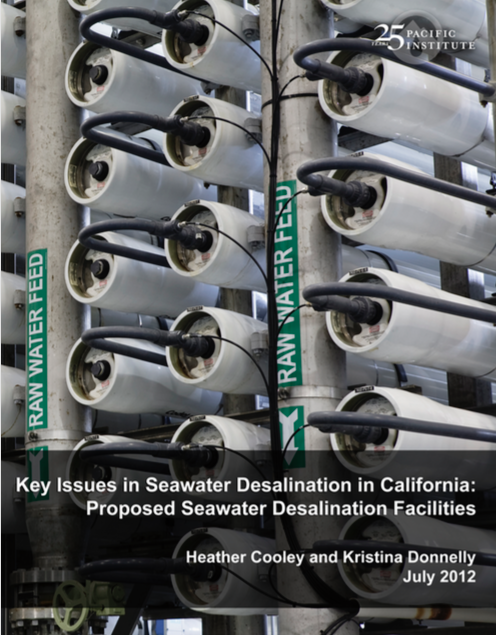
Key Issues in Seawater Desalination in California: Proposed Seawater Desalination Facilities
July 1, 2012 | publication
In 2006, the Pacific Institute published “Desalination, With a Grain of Salt,” a comprehensive overview of the advantages and disadvantages of seawater desalination to help meet California’s water needs. In 2012, the Institute launched a series of research reports identifying the key outstanding issues for desalination in California: cost and financing; energy use and associated greenhouse gas emissions; and marine impacts.
Opinion Editorial: Separating Frack From Fiction
June 22, 2012 | publication
Fracking – a process to improve the production of oil and gas wells – has generated tremendous controversy in recent years. There are daily and confusing media reports from outlets across the United States and other countries, including Canada, South Africa, Australia, France and England.
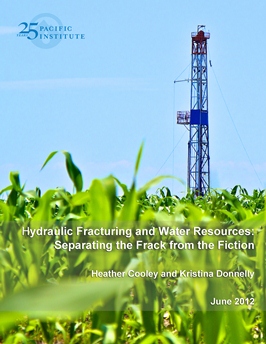
Hydraulic Fracturing and Water Resources: Separating the Frack from the Fiction
June 21, 2012 | publication
Hydraulic fracturing, or “fracking,” has generated growing controversy. The lack of credible and comprehensive data around the possible risks of fracking is a major impediment to a clear assessment of its impacts.
Water as a Casualty of Conflict: Threats to Business and Society in High-Risk Areas
June 13, 2012 | publication
While much research has been produced on how water use and pollution can exacerbate conflict, this report focuses more broadly on the ways conflict and high-risk situations can affect water systems and resources directly, as well as the planning, construction, operation, and management of water systems.

Water Rates: Water Affordability – Issue Brief
June 2, 2012 | publication
Water rates in the United States are not typically understood as a human rights issue, but utility bills can be an exceptional burden for low income households.
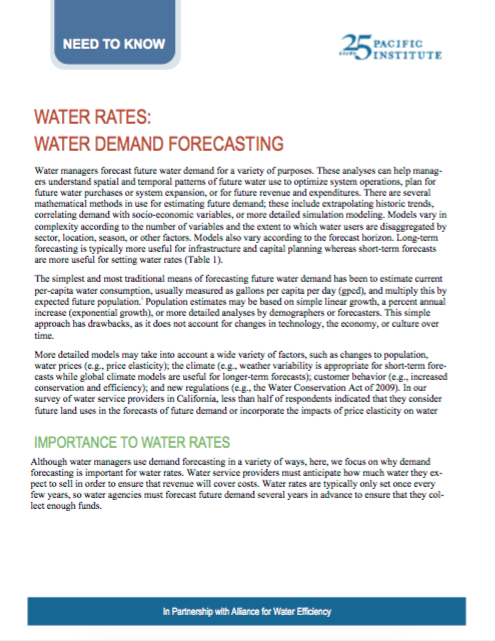
Water Rates: Water Demand Forecasting – Issue Brief
June 2, 2012 | publication
Historically, water demand forecasts have been determined by estimating current per-capita water consumption multiplied by expected future population.

Notes from the Field: Pilot Testing the Community Choices for Water in Ghana
May 16, 2012 | post
Over the past 12 months, the Pacific Institute – in partnership with its West Africa partners NewEnergy, World Vision, Rural Aid, Pronet North, and Water and Sanitation for Africa...
Page 47 of 58



